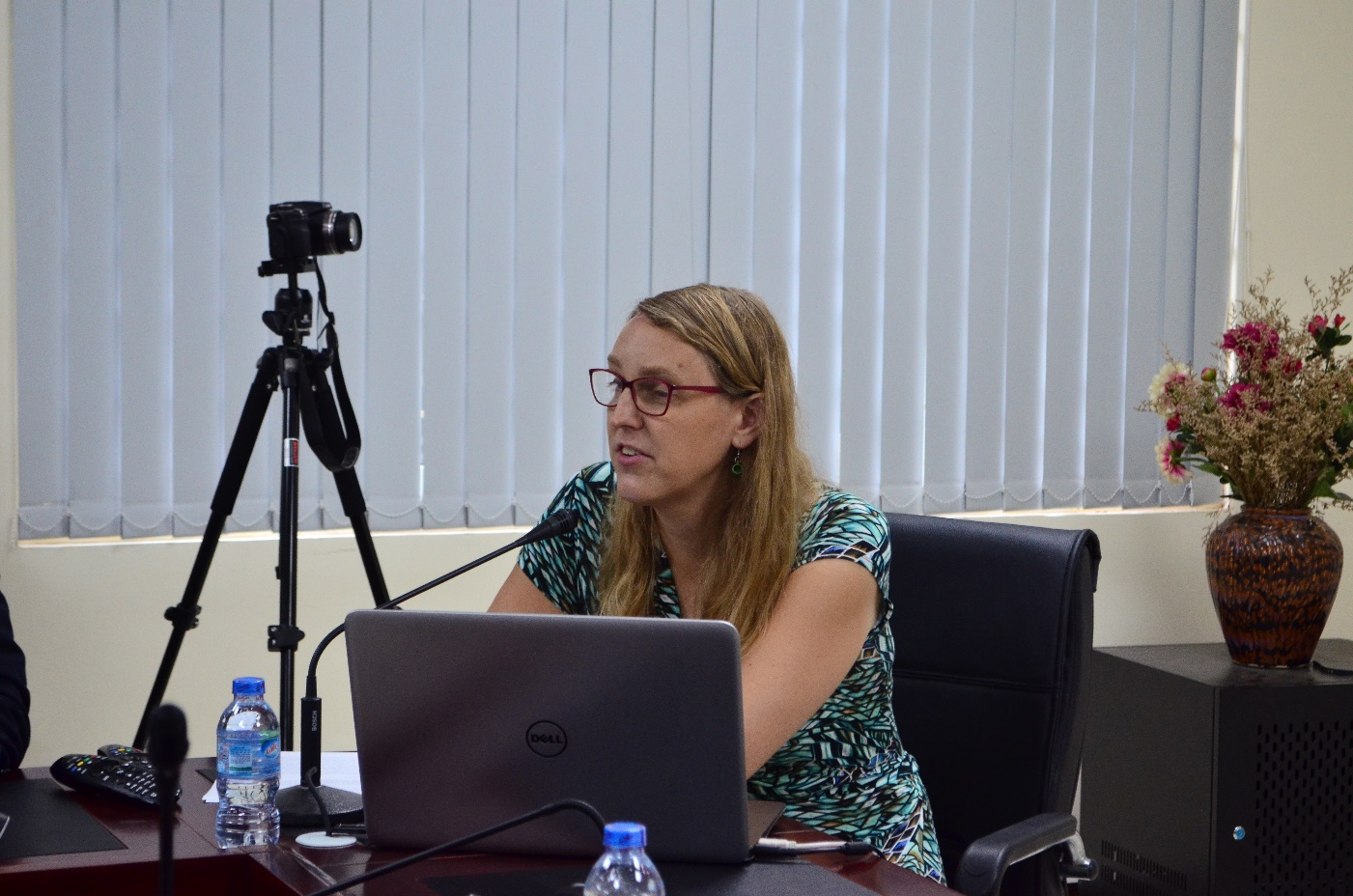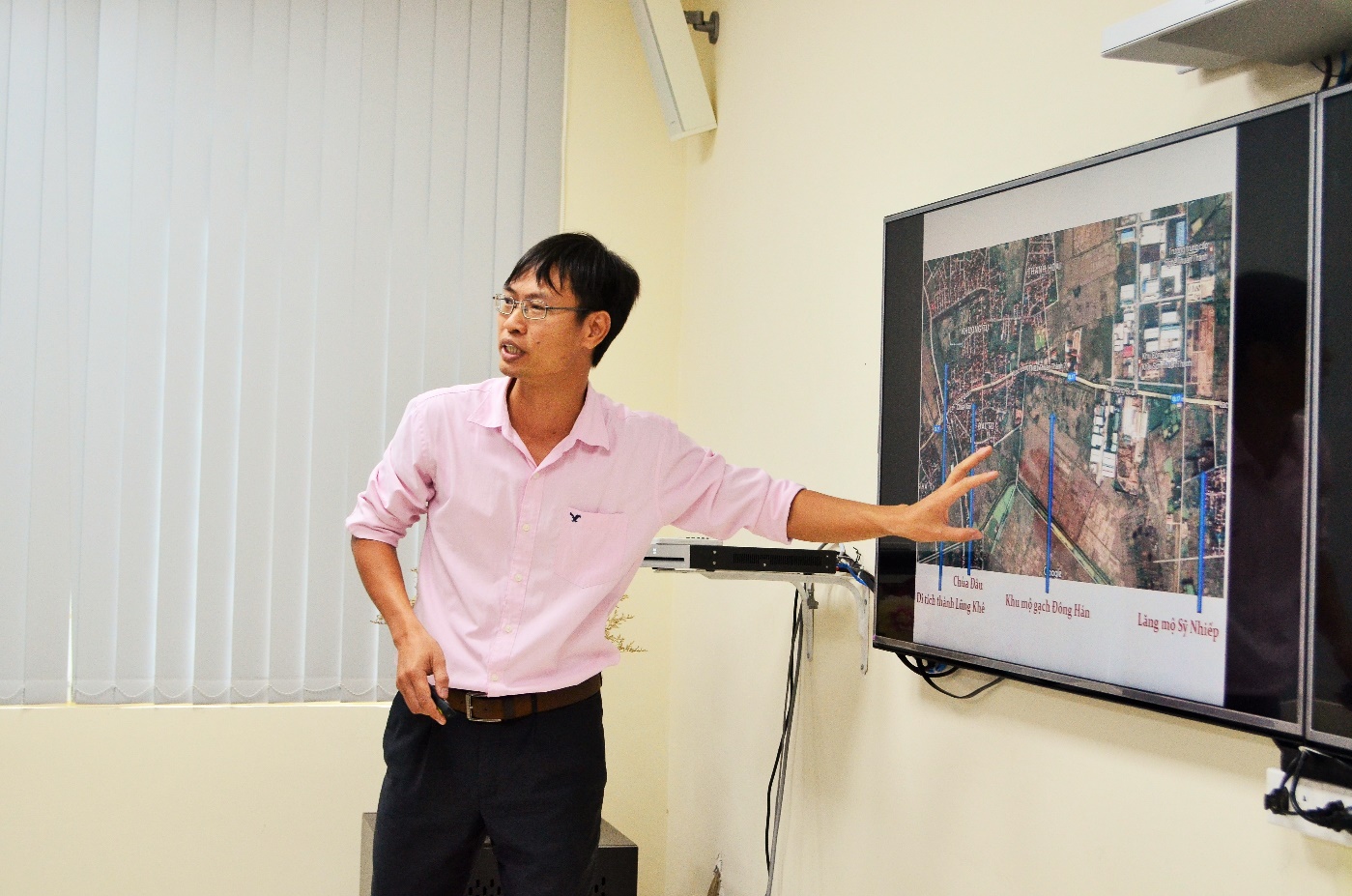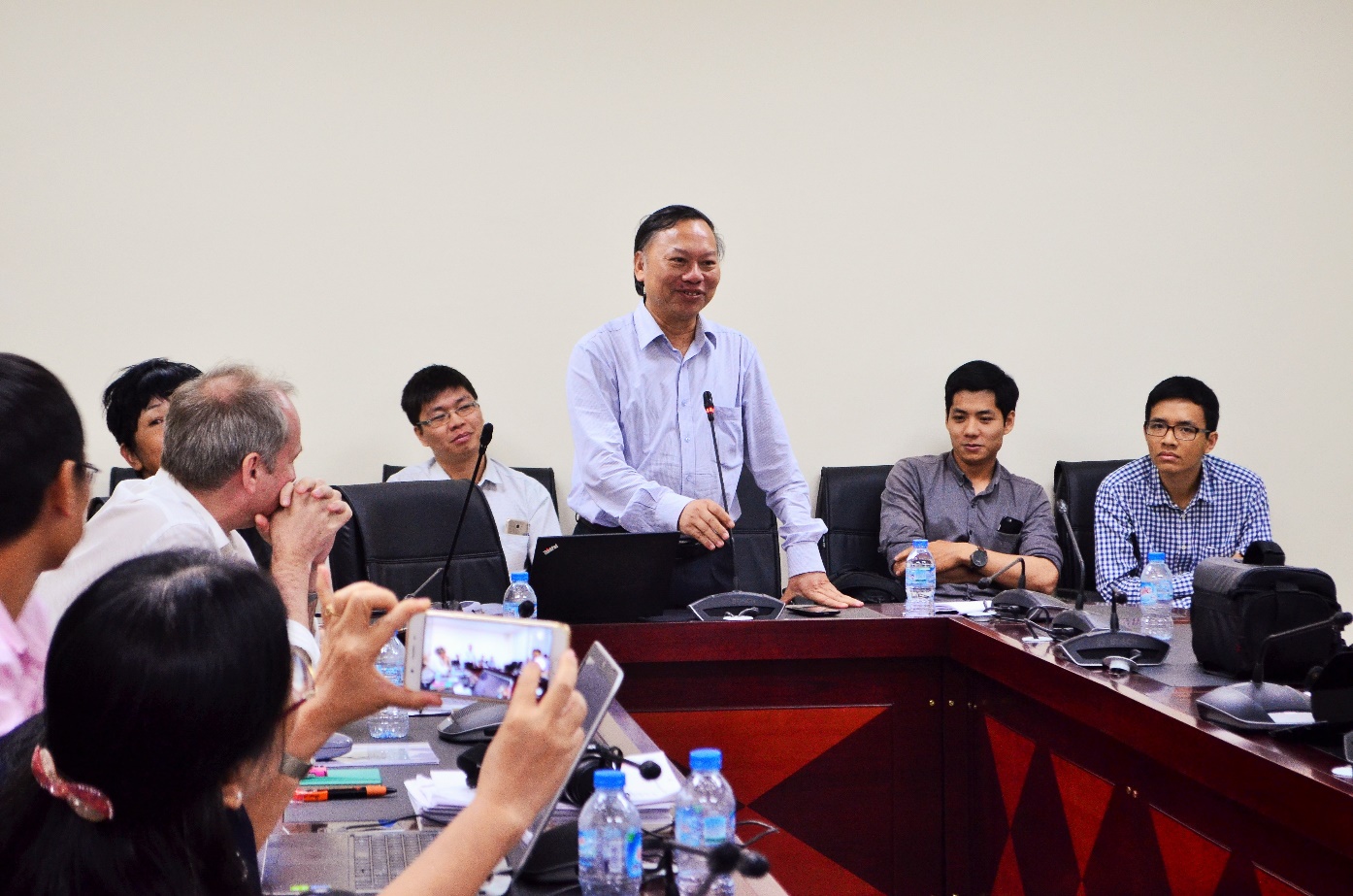
In Vietnamese history, research on the millennium period of domination by Northern dynasties is very important for many major issues of national history and culture. This topic, however, still contains many interesting and difficult scientific questions, from issues of approach, evaluation, macro-perception, to doubts about document research. The importance, attractiveness and mystery of 1000 years of Northern domination have attracted the interest and research of many generations of scholars, such as the names Henri Maspero, Leonard Aurousseau of French historians in the early 20th century, Dao Duy Anh, Phan Huy Le, Tran Quoc Vuong, Nguyen Quang Ngoc of modern Vietnamese history, or Stephen Dennis O' Harrow, Keith Weller Taylor, Li Tana, Judith Cameron in European and American research circles for nearly 40 years.
However, for the generation of young scientists in Vietnam as well as internationally, not many people have chosen a research direction associated with this historical period, a job that requires special abilities, skills, passion, patience and perseverance. The main sources of materials for this academic topic are ancient Chinese documents, mostly from China, archaeological documents, inscriptions, folk documents... all dating and existing more than a thousand years ago. Not only that, this is also a long, complicated, tumultuous historical period and subject to many different, even contradictory, views and evaluations. Until recently, at the Faculty of History, University of Social Sciences and Humanities, Vietnam National University, Hanoi, two young researchers have enthusiastically faced the challenge to pursue the research direction of Northern Vietnam.
Master Pham Le Huy, Lecturer of the Faculty of Oriental Studies, is currently a PhD student in the Department of Ancient and Medieval Vietnamese History of the Faculty. Since 2008, after graduating from the University and Postgraduate studies at Waseda University (Tokyo, Japan) and returning to Vietnam, Pham Le Huy has paid attention to the issue of Annam leaders during the Tang Dynasty (7th-10th centuries AD) and had his first scientific publication. Carrying out his thesis at the Department, Pham Le Huy, with his strengths in research capacity, passion and rich foreign language skills, has made great scientific contributions to the documentation and awareness of the period of Northern domination of Vietnam with the work "The Chieftain Class in Giao Chau - An Nam during the Sui - Tang Protectorate Period" along with many in-depth research articles in domestic and foreign academic journals and forums.
Dr. Dang Hong Son, Deputy Head of the Department of Archaeology, Deputy Dean of the Faculty, is a historical archaeologist, expert on Vietnamese and East Asian architectural materials in the pre-modern period, author of the monographBricks, Tiles and Roof Decoration Materials of Ly - Tran - Ho Dynasties(The World Publishing House, Hanoi, 2016). After defending his PhD at the Border Archaeology Center, Academy of Letters, Jilin University (Changchun, China), Dang Hong Son continued working at the Faculty of History, participating in leading excavations at the Luy Lau ancient citadel relic (Lung Khe village, Thanh Khuong commune, Thuan Thanh, Bac Ninh).
While the studies from different perspectives of History and Archaeology by Pham Le Huy and Dang Hong Son have raised the need for in-depth discussion forums, in July-August 2017, an expert on the period of Chinese domination in the history of South China and North Vietnam made an academic exchange and document exploitation trip to Vietnam. Dr. Catherine Churchman is a historian, teaching the Asian Studies Program at Victoria University, Wellington, specializing in the history of the Lingnan region and mainland Southeast Asia in the first millennium AD, the Min Nan language of the Chinese community in Malaysia, the local identity of the Chinese people in China as well as in the Chinese migrant communities, Thai and Vietnamese literature written in Nom script, and Han Nom literature of Vietnam. In 2016, the Doctor published her monograph titledThe People Between the Rivers: The Rise and Fall of a Bronze Drum Culture, 200-750 CE(The People Groups between Tay Giang and Nhi Ha: The Rise and Fall of a Bronze Drum Culture from the 3rd to the Mid-8th Century AD), (Lanham: Rowman & Littlefield), which is an improvement and completion of the doctoral thesis on Asian History that Churchman defended with distinction at the Australian National University. Dr. Churman's work convincingly shows, with documentary and archaeological evidence, that between the 2nd and 3rd centuries and the mid-8th century, there was a history of the rise and fall of the Li and Lao polities in the mountainous region between the two rivers, the Red River (Northern Vietnam) and the Tay Giang River (Guangxi, Guangdong (China) with the center being the lower delta, called the Pearl River Delta, where the famous Guangzhou trading port is located). With the material cultural symbol of Heger bronze drums type II, the Li and Lao societies became powerful and autonomous, relying on their geopolitical characteristics, economic and commercial position, mineral resources, as well as resolving the relationship with the Han dynasties in the context of the chaos of the Six Dynasties in particular, and the period between the Han and the Tang in general. The book discusses the fundamental theoretical issues of ancient history of Vietnam and South China such as the concepts of "Sinicization", "Ethnicity", the designations "Li" (俚), "Lao" (獠), as well as contributing to explaining the path of independence from Giao Chau - An Nam to Dai Co Viet in the 10th century of our nation's history.
The scientific seminar was held with the support and encouragement of the Party Committee, the Board of Directors of the Faculty of History, the Board of Directors of the Museum of Anthropology, and especially the Board of Directors of the University of Social Sciences and Humanities, Vietnam National University, Hanoi. The chair of the seminar was Prof. Dr. People's Teacher Nguyen Quang Ngoc (Vice President of the Vietnam Historical Science Association, Head of the Department of Cultural Studies and History of Vietnamese Culture, Faculty of History). Also attending and giving professional comments to the Seminar were Associate Professor Dr. Lam My Dung (Director of the Museum of Anthropology, Head of the Department of Archaeology, Faculty of History), Associate Professor Dr. Tran Thien Thanh (Deputy Head of the Faculty of History, representative of the Faculty to give the opening speech), Professor Dr. Andrew Hardy (Chief Representative of EFEO in Vietnam), Associate Professor Dr. Trinh Sinh (Institute of Archaeology), along with researchers from Faculties of the University of Social Sciences and Humanities, member Schools and Institutes of the Vietnam National University, Hanoi, research institutes of the Vietnam Academy of Social Sciences, Hanoi National University of Education, Vietnam Historical Science Association, and many other scholars from both at home and abroad. Participating in the discussion for the presentations of the Seminar was MSc. Vu Duong Luan (Institute of Vietnamese Studies and Development Sciences, VNU), currently a PhD student at Zhongshan University (Guangzhou, China), also a young expert on the history of the Vietnam - China border area in the early modern period.
Three presentations at the Symposium include “Cross-Border Thinking in the History of Giao Chau” by Dr. Catherine Churchman, paper “The relationship between the Red River Delta and its inhabitants with other areas under the Sui-Tang period seen from the traffic routes" by Pham Le Huy, and research "History from Bricks and Tiles: Lung Khe human face tile head (Vietnam)" by Dr. Dang Hong Son. In terms of space, if Catherine Churchman's presentation covers a large area from Liangguang (China), through the mountainous border areas of modern Vietnam - China, to the North and North Central (Thanh - Nghe - Tinh) of Vietnam, with two "sinicized oases" of Guangzhou (Pearl River Delta, Guangdong) and the Red River Delta (the center of Giao Chau in the 3rd - 7th century AD), but the focus that the author aims at is the mountainous region of Guangxi and Northern Vietnam; then Pham Le Huy's research focuses on the Northern Delta but connects with other areas such as, within the scope of the presentation, Southern Guangxi and the Thanh Hoa region through important waterways and roads, especially the "Ma Vien road" and the Day river; while Dang Hong Son's presentation focuses on the ancient citadel site of Lung Khe (Thuan Thanh, Bac Ninh), a prosperous urban center of Giao Chi department during the Han dynasty, possibly the headquarters of the Luy protectorate. Lau or Long Bien in ancient Chinese and Vietnamese literature left over a thousand years ago. In terms of time, if Dang Hong Son focused on the Han period (2nd century BC - 3rd century AD) and encroached a little on the beginning of the Three Kingdoms period; then Catherine Churchman's research has a rather long time frame, from after the Han Dynasty to the Sui Dynasty (Six Dynasties period), even to the middle of the 8th century under the Tang Dynasty; while Pham Le Huy's interests so far have been focused on the Sui - Tang period (7th - 10th century AD). The discussion, therefore, has a reasonable connection in space and time: expanding, linking and narrowing in space, seamless and rhythmic in research time.

Dr. Catherine Churchman presents the research "People Groups between Tay Giang and Nhi Ha" and its relationship with the history of Giao Chau during the Chinese domination period
Regarding content issues, all three papers lead to a common perception, precisely a re-perception, of the history of Chinese domination of Vietnam, as well as of the communities in Southern China until before the 10th century. Accordingly, the history of Giao Chau - An Nam cannot be confined to the present-day space of modern Vietnam, the central region is the Red River Delta which always has close connections with other regions in terms of politics, economy and culture. Traffic connections or geographical barriers, developments outside the national border all have a significant impact on the history of Giao Chau, or the religious and belief conversion in Giao Chi district in the 2nd-3rd century, not only in one direction of convergence and integration, but very possibly, as Dang Hong Son's hypothesis, also spread and exported back to the North, to the capital of a Han dynasty. Dr. Churchman, therefore, proposed a way of thinking beyond the borders, according to which, there is a great similarity between the two deltas of the Nhi Ha and Chau Giang rivers, but at the same time, there is a considerable isolation of the central highlands, and it is the activities of those non-Han, non-Viet linguistic and ethnic groups that contributed to accelerating the path to independence and autonomy of the Vietnamese people, so that this process blossomed in the 10th century. Similarly, Pham Le Huy, although standing from the perspective of the Northern Delta of Vietnam, also pointed out the connections between the Red River basin and the regions across the border, or even the traffic obstacles with the area that is now located inside the modern territory. Both Catherine and Le Huy unanimously affirmed that the formation of a Dai Co Viet in the 10th century was not sudden, not only because of the collapse of the Tang Empire, but it was the result of a long process, with the participation of diverse entities inside and outside Giao Chau.

MSc. Pham Le Huy presented on the connection between the Northern Delta with Southern Guangxi and Thanh Hoa through water and land transport routes.
However, experts also have some inconsistent views. That is, if Churchman defines the concepts of “Li” and “Lao” from a political perspective, not ethnic characteristics, according to the level of relationship between the autonomous polity of the “between Liangjiang” groups and the Han Chinese occupying governments; then Pham Le Huy points out the much more complicated and chaotic nature of these concepts. The Red River Delta as portrayed by Huy is much more diverse than the old perception: both multi-ethnic in terms of population characteristics (indigenous, Han, Man - Lao - Di non-Hoa Ha, Chenla people), and multi-terrain (delta, stream, coastal), especially the process of “multi-layered mixed blood” and “diverse indigenization” of the resident classes, in which the most notable is the immigrant class from the North, and this greatly affects the designations “Hoa Ha”, “Man”, “Di” and “Lao” in the history of Giao Chau. In addition, the name of the ancient citadel in Lung Khe is not agreed upon between the two young scientists Pham Le Huy and Dang Hong Son. If Le Huy presents historical documentary evidence to confirm that Lung Khe cannot be Luy Lau, the location of the headquarters of Giao Chi Department in the Han Dynasty can only be on the right bank of the Red River, and the relic considered as "Luy Lau ancient citadel" in Thuan Thanh is recorded in Long Bien in documents and inscriptions; then from the archaeological perspective, Dang Hong Son determined that Lung Khe was also a prosperous ancient urban area, a material vestige dating back to the Han - Luc dynasties period, the largest scale found so far in the Northern Delta, and whether Luy Lau is around Quen citadel (Quoc Oai) or somewhere in the Ha Tay area (old) or not, must wait for major archaeological excavations in the future. However, we can see that, in the differences in concepts, some common consensus among researchers still emerges, that is, both Catherine Churchman and Pham Le Huy do not define the terms "Li" and "Lao" according to the ethnic approach, and it is very possible that the debates about Luy Lau or Long Bien of Huy and Son will lead to a common conclusion - can two be one?!

Dr. Dang Hong Son presents research on human-faced tube tile heads at Lung Khe ancient citadel relic
The seminar also received comments, suggestions and exchanges from researchers Vu Duong Luan (on Churchman's lecture), Nguyen Quang Anh (on the geographical approach to waterways), Nguyen Huu Manh (updating the distribution statistics of bronze drums from late Heger I to Heger II in Northern Vietnam), opinions of Associate Professor, Dr. Trinh Sinh on the similarities and differences between Heger I and II drums, between Heger II drums in Northern Vietnam (specifically the upper Thanh Hoa) and Guangxi drums, on the Archaic element or "silence" of Heger II in the (old) Viet Bac region, and on the borderless approach to the territory in archaeological research of the Ancient and Early Medieval periods of Vietnam. And especially valuable scientific comments from Professor Lam My Dung, on the distribution of Heger I bronze drums in Southern China, Northern Vietnam from the 4th century BC to the 2nd century AD, and the differences in the statistics of the number of Han brick tombs in the Northern Delta of Giao Chau during the research period. Opinions of Vietnamese archaeologists show the need to add Vietnamese archaeological documents to the research.The People Between the RiversIn particular, the upcoming scientific orientation of author Churchman in general is increasingly promising and linked with Vietnamese research. These orientations also show that, in research on the Early History and Ancient Middle Ages of Vietnam, ancient documents are very important, but they cannot be everything; scholars who only rely on Chinese texts without placing those written documents in relation to other sources (archaeology, culture...), are likely to fall into an extreme point of view. The work of Dr. Churchman, the research of Pham Le Huy, as well as the newly published book of Prof. Dr. Nam C. Kim (The Origins of Ancient Vietnam, Oxford, 2015) has shown the effectiveness of this synthetic research direction, as well as the value of archaeological materials in the perception of early historical periods in Vietnam and Southeast Asia.
In his closing remarks at the seminar, Professor Nguyen Quang Ngoc welcomed the new approaches to the study of Vietnamese history by young scholars. These new directions have brought new, interesting and more accurate understanding of the 1000-year period of Chinese domination in Vietnamese history. The cross-border thinking and diverse, holistic approach proposed by Catherine Churchman and Pham Le Huy in today's seminar are also very similar to the two major trends in the study of Vietnamese history and culture expressed in the works.Vietnam Borderless Histories(Nhung Tuyet Tran, Anthony JS Reid, Phan Huy Le and other scholars, Wisconsin, 2006) and the principle of "Multi-Linear, Complete, Comprehensive Nature of Vietnamese History" which Professor, People's Teacher Phan Huy Le proposed in the work Ho Chi Minh Prize 2016Vietnamese History and Culture Access to the department(Hanoi, 2007, 2012). The Chairman also welcomed and highly appreciated the initiative of organizing the Seminar of the History Faculty's Youth Union, turning a scientific activity of a unit into a forum that is both specialized and national in scope, and can represent Vietnamese and international academia on the research topic. The seminar creates connections between experts, exchanges of knowledge, documents, new findings, especially establishing a network of young Vietnamese and international scientists, aiming at common research directions in the future. For the History Faculty, the exchanges at the Seminar also outlined training and research plans in the coming time, especially the Department of Archaeology, such as excavating the Quen citadel relic, building a research project for the Six Dynasties period, aiming to realize the development strategy of the Faculty which is to strengthen the close connection between archaeology and history.
International Scientific Conference "The period of Chinese domination (179 BC - 938 AD) in Vietnamese history: New studies"Opening a new direction in organizing the regular Seminar series of the Faculty of History, affirming the pioneering and top-notch research of a leading History training and research center in the country, with a tradition of more than 60 years of formation and development.

Prof. Dr. People's Teacher Nguyen Quang Ngoc chaired and delivered a closing speech at the seminar.

Speakers, Organizing Committee and some delegates took souvenir photos at the Seminar
Author:Ngoc Lan
Newer news
Older news